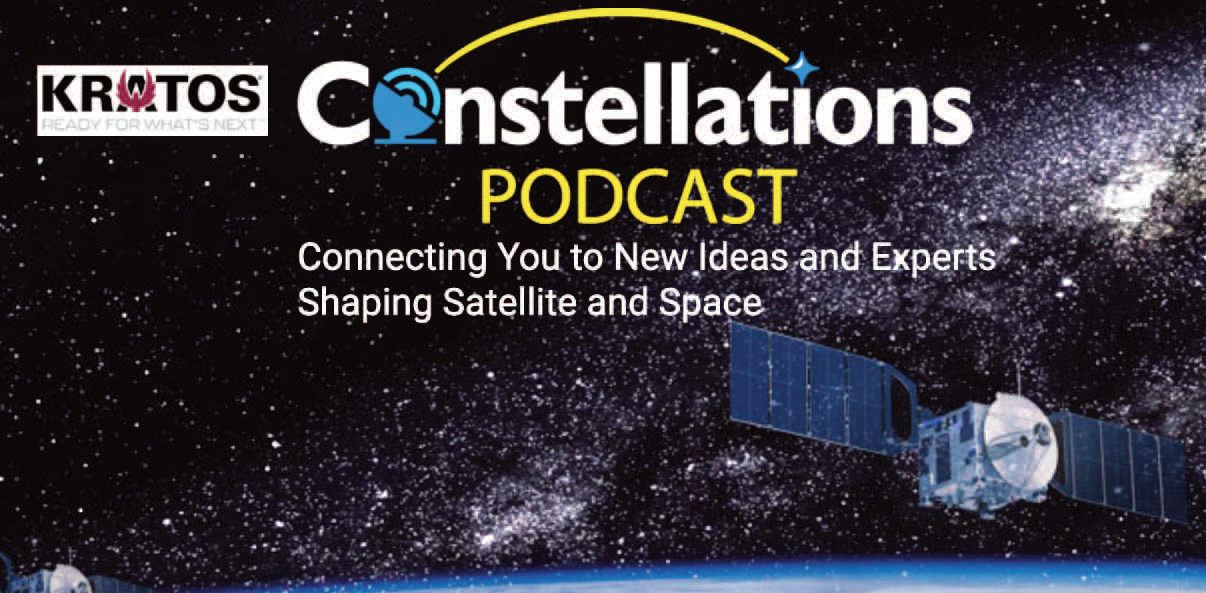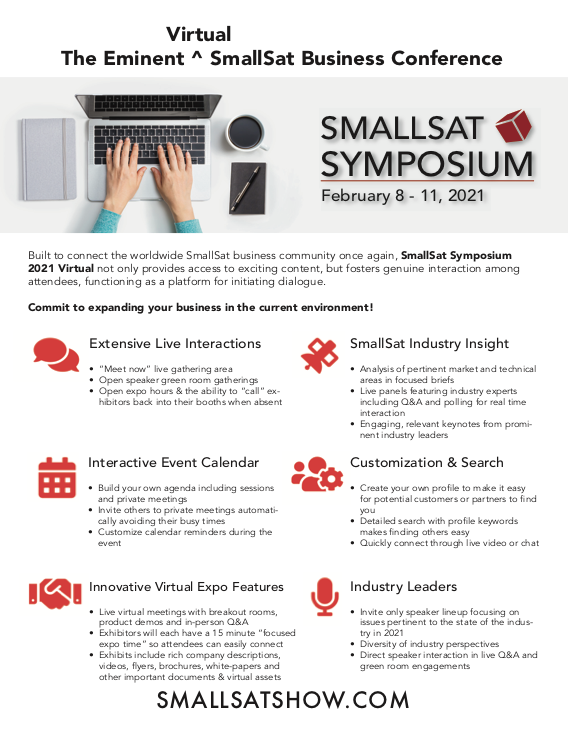NSR Analyst Shivaprakash Muruganandham shares insights from NSR’s recent report on ‘Satellite Ground Network Virtualization,’ and the implications for a ground segment that needs to catch up with innovations in space. Shiva explains how the ground needs to become more virtual, software defined, and cloud-centric to unlock the capabilities of newer HTS satellites, flexible payloads, and proliferated smallsat constellations for amore dynamically adaptive service-oriented future. The original interview was edited for length and format.
John Gilroy (JG), Host of Constellations
Welcome Shiva. We’re seeing how satellites and ground systems are not exactly in the same phase when it comes to advances and innovation, and that has implications in terms of bottlenecking these new capabilities in space. Can you explain some of these limitations and the problems that poses?

Shivaprakash Muruganandham (SM)
Thanks John. As you said, there have been a lot of innovations in the space segment, from HTS satellites to more recent LEO constellations. We’re not only seeing more satellites being launched, but also this “cloudification” movement that has been touted as the next big thing in the satellite industry.
One reason the ground hasn’t kept pace is because the VC backed new space companies coming into the industry have been focused mostly on driving innovation in space. We’ve seen some improvements on the ground, but it’s been mostly siloed, incremental performance.
The traditional mindset with the ground was to own as much of the system as possible, but that seems to be slowly changing. Now you have new space and other companies coming into the picture who are much more open to outsourcing some of their requirements to external providers.
JG
How does the ground system change to avoid becoming the bottleneck to all this space innovation?
SM
To illustrate uncorking the bottleneck let’s look at the Earth Observation (EO) segment. On the space side we've seen so many improvements where you have better sensors, better optical payloads, better radar imaging satellites, with more satellites downlinking larger volumes of data to the ground. For a ground segment that’s been very hardware centric, that’s challenging. To keep up, the ground needs to adapt to a more software-oriented approach, where you can begin thinking about a software-as-a-service kind of play, or an infrastructure as a service, or even platform as a service.
Then, you’re not only removing a bottleneck in this entire value chain, but you're also improving your capabilities to better serve your customers. Having cloud capabilities allow you to better integrate with cloud service providers and their product portfolios. Customers using those service providers can then just onboard directly to your systems, or connect directly to your APIs, for better, more cost-effective relationships.

JG
It seems different industries with these challenges have moved to the cloud. The telecom industry, the IT industry, and now the satellite. What can we learn from their experiences?
SM
One of the first to adopt the software as a service business model was Salesforce. What the ground segment can learn from the wider IT sector is the importance of standardization. Right now there’s multiple types of ground systems and service providers all with their own solutions, their own modulation schemes, or specs for different types of flight radios and whatnot. Take cell phones for instance. Whether it was a Nokia, Samsung, or some other manufacturer, industry-wide standards accommodated different vendors.
When Elon Musk talked about an antenna solution on the ground, he said it needed to be a plug and play system with just two instructions. Plug it in and point it at the sky. For that ease of use on the ground, you need to have standards in place.
JG
How does the traditional analog RF-based ground system compare to a digital and virtualized one?
SM
The traditional model is much more hardware focused, with different boxes from the antenna, to the teleport hub, to the modem, and all the different subsystems. And from there you have the intermediate frequency, the base band unit, and layered on top some kind of protocol. When you're talking virtualization, you're simply talking about converting as much of the hardware as possible into a more software-oriented type network. With more software functions in place, you can update an existing modem system so that it has the latest functionalities that you might need within the network.
JG
What are the key building blocks for ground network virtualization?
SM
There are different trends that have been driving this movement. One is big data analytics, the ability to use machine learning algorithms to understand what’s happening with your signals and to dynamically improve your network and service to the whole integrated enterprise. Another is having a digitalization strategy to digitize the entire RF chain, whether in space or on the ground so that you can move to the cloud. And virtualizing different layers of the ground system itself so it can connect to an enterprise network functions at different levels.
JG
Smallsat companies have been early adopters in moving to more innovative and virtualized ground networks. What can be learned from their experience?
SM
If you look at how EO was done traditionally, you had a big satellite with huge sensors that would pass over a ground station for a pass window. Once you acquired your images and data to whatever degree, you had a relationship with the ground service provider to down link your data during that pass. Now, with these smaller satellites and better electronics, you have much more data coming in being downlinked. These huge volumes require that the ground segment does not become a bottleneck.
Some smallsat companies tried to have their own ground stations, but when that didn’t work, they started outsourcing parts of it. And now you have new space companies, and even non-space companies coming into the picture saying, "we’ll provide you the ground infrastructure ourselves, and you can just plug into our API and you can use it as a subscription service." This has changed the game and we are now in that transition.
Once they’ve downlinked that data into the ground stations, they're able to immediately, or more efficiently link to the customer or whatever applications that they're building with their analytic services, whether it’s for maritime, agriculture, or other application. This is the kind of transition we've seen in the EO sector and smallsats in general, and much of the rest of the SATCOM industry could potentially follow as well.
JG
So, the software approach gives you the ability to configure these things dynamically?
SM
Yes, if you’re more software-oriented, you’re more dynamic and more flexible, and you can configure to any type of customer demand almost immediately, compared to having to possibly replace an entire box physically.
JG
What will the evolution to a virtualized ground system will look like and how long do you think that'll take?
SM
It’s hard to say what the timeline will be for that evolution, but it could happen in a few different steps. First you start with connecting the base connection that’s required between points of presence on the ground, whether for SATCOM, or from space to ground in the case of data downlinks and EO imagery.
After that you move on to digitizing and virtualizing this entire structure, and start adding different layers on top of it that are software applications. And then you start thinking about extending these solutions to the customers themselves in terms of what they have in place already with their cloud service providers, and the applications
they're looking to serve their customers with, and how you can integrate with those systems. And then eventually, you put all of this together and provide it all as a service with pricing for that particular business model.
JG
What types of organizations do you think will benefit most from a virtualized ground system, and why?
SM
My favorite example is observation satellites, because these are the ones taking advantage of the transition on the ground, and because so much of what they’re doing is tied to the cloud already. It's not just the earth observation satellite operators, but also the entire value chain where you start thinking about value-added services and layers of information built on top of these satellite images. And then big data analytic type services, whether for precision agriculture, oil and gas, or a mining conglomerate who wants to know more about their production volume somewhere.
JG
Once you align dynamic satellites with a more dynamic ground what can you do that you otherwise couldn’t do today?
SM
The flexibility you alluded to earlier, the ability to be able to configure to different customer needs in a much shorter timescale. As well as supporting a variety of different customers as well, which could open new markets too.
JG
So, a more dynamic ground system would enable the satellite industry to create new business models, and move beyond its core markets?
SM
Yes, you see that happening with some of the non-space actors coming into the satellite industry. You have cloud service providers, whether an Amazon or a Microsoft, integrating their solutions with existing SATCOM service providers and their solutions. And you have this new type of managed services with much more automation, where a customer can just configure what they want, to whatever the specifications they might need with a satellite operator, and they're able to adapt to it instantaneously. That is the eventual goal if you're talking about being more dynamic and flexible.
JG
That would seem to go back to the standardization you need between dynamic satellites and ground stations, especially as many operators are looking at 5G as an integral part of their strategy?
SM
Standardization will be a key to this. Without industry-wide standards, we’ve got different service providers, or systems developers with their own standards, or having to cater to different types of schemes and standards, which is far more labor intensive.
JG
As an analyst, you’re accustomed to looking at where things are headed. Where do you see the ground segment in five years?
SM
It's a long process. We're starting to see a virtualization at different levels happen, which will continue. The wider IT and telecom sector have been doing this for a while and it's only now that the satellite industry is waking up to this digitalization and cloud strategy. We're thinking about software defined radios already, and now it's slowly coming to the ground too. It's a long process, where more parts of the system are being virtualized to serve customers much more dynamically.

JG
Perhaps we’ll expect more software vendors than hardware vendors?
SM
For sure. I come from more of a software, big data type background, and to me, it's a bit of a surprise it’s taken this long, but It's exciting to see how it will play out.
With more than 70 fascinating interviews, listen to Constellations podcasts as they become available. See the full list of interviews and subscribe at: https://www.kratosdefense.com/constellations-podcast


